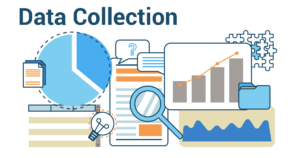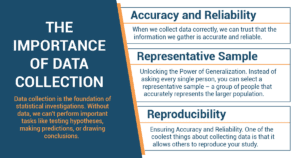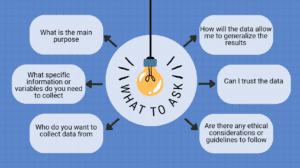Close your eyes for a moment and envision your typical morning routine. As you awaken, what’s the first thing you do? Do you reach for your smartphone and scroll through your social media feeds? Or perhaps you stumble into the kitchen to make yourself a cup of steaming coffee? Whatever it may be, take a moment to ponder the sheer amount of information you encounter and absorb during those precious first moments of the day.

Now, imagine each of these actions and encounters as a tiny droplet of data floating around you, waiting to be collected. Every social media post you like, every sip of coffee you relish, and every text message you send—all contributing to a vast ocean of data points. Surprised? Well, my friend, the truth is that you are swimming in a sea of data every single day, often unknowingly leaving ripples behind with every step you take.
But why is this important, you might ask? How does your morning routine relate to understanding the significance of data collection in statistical studies? The answer lies in a simple yet powerful realization—we live in an age where data has become the lifeblood of progress, innovation, and decision-making.
What is Data Collection?
In the corporate environment, data collection is akin to assembling the critical pieces needed to complete a complex jigsaw puzzle. It involves gathering the necessary insights to address our key business inquiries. Picture yourself investigating whether morning nutrition impacts employee productivity. To reach a conclusion, you must gather relevant data – the specifics and evidence that will provide you with the insights you need.

- Accuracy and reliability
When we collect data correctly, we can trust that the information we gather is accurate and reliable, directly relating to its validity. Validity refers to the extent to which the data accurately represents what is being studied. Think of it as building a sturdy bridge – if the foundation is strong, we can be confident that our findings are based on solid information. So, collecting data in the right way is crucial for producing meaningful and trustworthy results. - Representative sample: Unlocking the power of generalization
Suppose you’re interested in understanding the daily social media usage of employees for a workplace efficiency study. Rather than surveying every employee in the company, you would choose a representative sample – a small group that reflects the wider workforce. By analyzing data from this smaller group, you can infer the social media habits of all employees. It’s like tasting a piece of a dish to get a sense of the entire meal. - Reproducibility: Ensuring accuracy and reliability
One of the coolest things about collecting data is that it allows others to reproduce your study. If you collect your data in a clear and organized way, other people can follow your steps and see if they get the same results. It’s like passing on a recipe to a friend – they can make the same dish and see if it turns out just as delicious. This process, known as reproducibility, ensures that your findings are accurate and reliable.
Questions to Ask During Data Collection
